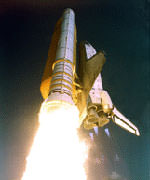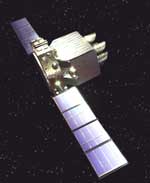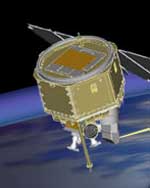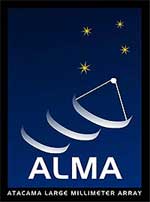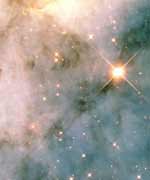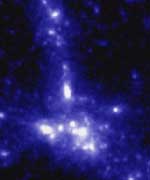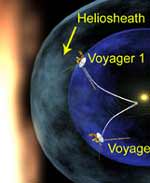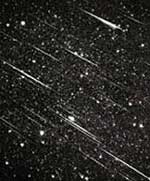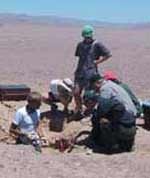
Image credit: NASA
A team of scientists have traveled to one of the driest places on Earth to help understand why past missions to Mars have failed to detect any life in the soil. The Atacama Desert is located in a region of Chile which is blocked on both sides by high mountain ranges, so it’s incredibly dry. The scientists have studied the soil and realized that organic material is there, it’s just so minimal that the instruments on board the Viking lander, which visited Mars in the 1970s, wouldn’t have been able to sense them. More sophisticated instruments should be installed on future missions to find evidence of life.
A team of scientists from NASA, the Universidad Nacional Autonoma de Mexico, Louisiana State University and several other research organizations has discovered clues from one of Earth’s driest deserts about the limits of life on Earth, and why past missions to Mars may have failed to detect life.
The results were published this week in Science magazine in an article entitled “Mars-like Soils in the Atacama Desert, Chile, and the Dry Limit of Microbial Life.”
NASA’s Viking missions to Mars in the 1970s showed the martian soil to be disappointingly lifeless and depleted in organic materials, the chemical precursors necessary for life. Last year, in the driest part of Chile’s Atacama Desert, the research team conducted microbe-hunting experiments similar to Viking’s, and no evidence of life was found. The scientists called the finding “highly unusual” in an environment exposed to the atmosphere.
“In the driest part of the Atacama, we found that, if Viking had landed there instead of on Mars and done exactly the same experiments, we would also have been shut out,” said Dr. Chris McKay, the expedition’s principal investigator, who is based at NASA Ames Research Center, Moffett Field, Calif. “The Atacama appears to be the only place on Earth Viking would have found nothing.”
During field studies, the team analyzed Atacama’s depleted Mars-like soils and found organic materials at such low levels and released at such high temperatures that Viking would not have been able to detect them, said McKay, who noted that the team did discover a non-biological oxidative substance that appears to have reacted with the organics — results that mimicked Viking’s results.
“The Atacama is the only place on Earth that I’ve taken soil samples to grow microorganisms back at the lab and nothing whatsoever grew,” said Dr. Fred A. Rainey, a co-author from Louisiana State University, who studies microorganisms in extreme environments.
According to the researchers, the Atacama site they studied could serve as a valuable testbed for developing instruments and experiments that are better tailored to finding microbial life on Mars than the current generation. “We think Atacama’s lifeless zone is a great resource to develop portable and self-contained instruments that are especially designed for taking and analyzing samples of the martian soil,” McKay said.
More sophisticated instruments on future sample-return Mars missions are a necessity if scientists are to avoid contaminating future martian samples, McKay noted. “We’re still doing the first steps of instrument development for Mars.” Recently, researchers have developed a method to extract DNA from soil without humans getting involved in processing the data, which is “a step in the right direction,” according to McKay.
The reason Chile’s Atacama Desert is so dry and virtually sterile, researchers say, is because it is blocked from moisture on both sides by the Andes mountains and by coastal mountains. At 3,000 feet, the Atacama is 15 million years old and 50 times more arid than California’s Death Valley. The scientists studied the driest part of the Atacama, an area called the ‘double rain shadow.’ During the past four years, the team’s sensor station has recorded only one rainfall, which shed a paltry 1/10 of an inch of moisture. McKay hypothesizes that it rains in the arid core of the Atacama on average of only once every 10 years.
The Atacama research was funded by NASA’s Astrobiology Science and Technology for Exploring Planets program, by Louisiana State University, the National Science Foundation and by several other organizations.
The article was also authored by Dr. Rafael Navarro-Gonzalez, Dr. Paola Molina and Dr .Jose de la Rosa from the Universidad Nacional Autonoma de Mexico, Mexico City, MX; Danielle Bagaley, Becky Hollen and Alanna Small, Louisiana State University, Baton Rouge, LA.; Dr. Richard Quinn, the SETI Institute, Mountain View, Calif.; Dr. Frank Grunthaner, NASA Jet Propulsion Laboratory, Pasadena, Calif.; Dr. Luis Caceres, Instituto del Desierto y Departameno de Ingenieria, Quimica; and Dr. Benito Gomez-Silva, Instituto del Desierto y unidad de Bioquimica, Universidad de Antofagasta, Antofagasta, Chile.
For images of the field experiments, please go to: http://www.sciencemag.org
Original Source: NASA News Release

